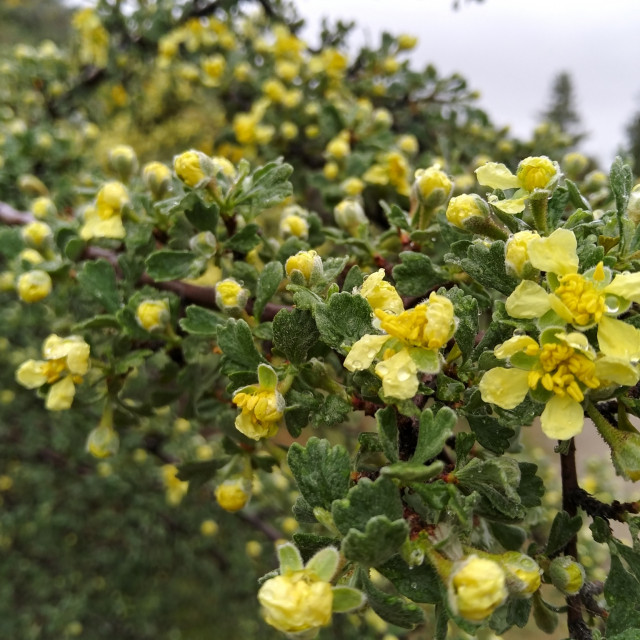COMMON NAME
Antelope bitterbrush
SCIENTIFIC NAME
Purshia tridentata
ALSO KNOWN AS
antelope brush, bitterbrush, desert bitterbrush
Plant family
Rose (Rosaceae)
Plant group
Deciduous Trees and Shrubs
Antelope bitterbrush is a perennial, deciduous shrub or small tree native to western North America.
73 reports
26+
OBSERVERS
73+
OBSERVATIONS
Identification hints
Antelope bitterbrush is a large semi-evergreen shrub with small, leathery, three-lobed leaves dotted with many tiny pale-yellow 5 petaled flowers when blooming. The flowers are fragrant but the leaves are not.
Did you know?
Antelope bitterbrush is an important food source for wildlife and livestock, and it supports several species of insects. There are two recognized varieties of bitterbrush, one which is primarily found in the southern part of the range and the other which is found throughout the range. Antelope bitterbrush can produce root nodules that fix nitrogen, helping the plant survive in harsh conditions.
DISTRIBUTION IN TH U.S.
Arizona
,
California
,
Colorado
,
Idaho
,
Montana
,
Nebraska
,
New Mexico
,
Nevada
,
Oregon
,
Utah
,
Washington
,
Wyoming
HABITAT
Antelope bitterbrush thrives in mountainous regions of western North America with dry, well-drained soils (sandy, rocky, gravelly). Antelope bitterbrush is typical of sagebrush, desert, shrub-steppe, and pine-juniper woodlands, and can be found at high elevations from 3000-11,000 feet above sea level.
ATTRIBUTES
Leaves
The leaves of Antelope bitterbrush appear before the flowers in the early spring. Leaves tiny, leathery, dark-green, and wedge shaped, alternately places along stems. Each leaf is deeply 3-lobed and grayish-woolly on the underneath side. Leaves are considered semi-deciduous and semi-evergreen depending on location. Leaves are not aromatic, in contrast to other similar shrubs.
Flowers
Individual flowers are yellow, white, or cream-colored and found both at the ends of the branches (terminal) and sticking off the sides of branches accompanied by small leaves (leafy spurs). Flowers are small and tubular with five petals. The flowers are fragrant and pollinated by insects.
Fruits
Fruits of antelope bitterbrush are single or paired achenes, elliptical to tear shaped.
Bark
The bark is thin, grayish to brown. The twigs are slender, reddish brown becoming gray-brown with age.
Bloom Time
Antelope bitterbrush blooms from May through July.
See Menu
- 2021 Chicago Botanic Garden. All Rights Reserved.
-
Creative Commons
BY-NC-SA 4.0 - Terms of Use
- Privacy Policy
- Data Sharing and Citation Policies
- 2021 Chicago Botanic Garden. All Rights Reserved.



